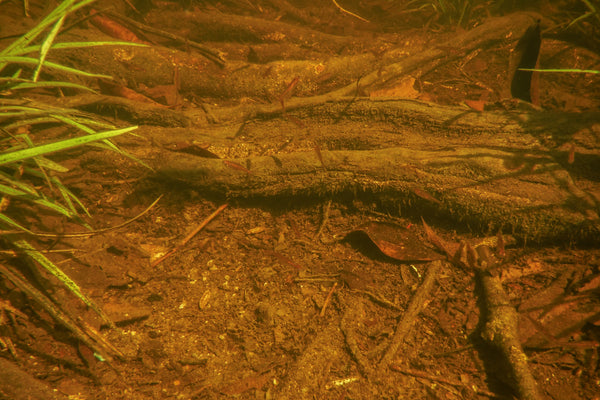- Continue Shopping
- Your Cart is Empty
Along the (grassy) shoreline...
I'm becoming more and more obsessed with the habitats where land and water meet. I mean, I always was, because there is something extraordinarily compelling about them to me. Now, more than ever, I'd love to start playing with this concept in some tanks.

With the launch of "Estuary", we've seen more and more interest in the mangrove thicket habitats, which encompass both the aquatic and terrestrial component.

I'm equally fascinated by Asian and Amazonian streams and marginal areas, specifically the areas where land meets the water. Okay, so ripariums...or paludariums...However, with much greater emphasis on the aquariums, not necessarily 50/50 land to water, ya know? Would that simply be a "lower water level aquarium display?" Whatever. You can call it what you want to, but the idea of replicating shorelines is compelling to me.

Why?
*The soils and plants of the terrestrial environment have a direct and significant impact on the aquatic environment. Consider the igarape and igapo habitats- essentially flooded forest floors.

*The plants which grow along the waterline in these habitats provide shade, protection from aerial predators, and the occasional fruit or seed pod, which fishes utilize for food, shelter, or foraging.

*Terrestrial insects inhabit these plants and grasses, often falling into the water, providing a food source for many different small fishes. With some of their larvae often having an "aquatic phase", this makes some of these insects a sort of "on-site" supplemental food production source!
Now, I'm thinking a lot about the amazing work that some of our friends in the vivarium world do. Specifically, the use of tree fern "mats", lichen, Sphagnum and other mosses and such to create a sort of "rainforest" background for their work. These are spectacular, especially when planted with bromeliads, orchids, etc. What cues can we take from them? I think utilizing these materials on the "topside"- even in "almost full" aquariums, would really reinforce the water/land relationship and create a dramatic aesthetic. Who has had long-term experience with some of these materials (specifically, the dried lichens and mosses) when partially submerged?

I realize some may gradually (or perhaps, NOT so gradually) break down in an aquatic environment...they will definitely add some sort of "tint" to the water...I know this from playing with them in the past in displays.

When we talk about plants, it certainly doesn't have to be as high concept as what our frog and vivarium friends do in their displays.

I'm thinking that just having some plants like Philodenron, etc. "rooting" in the water, with their extensive root tangles, creates the sort of vibe we're talking about, while providing "functional" benefits of nutrient absorption, etc. for the aquarium. We could utilize some of the commercially available riparium planters, or simply let them "dangle" in our tanks, to create a cool look.

The idea of using terrestrial soils in aquariums in our substrates is something we've touched on several times. Our planted tank friends have much experience with this. I'd like to see us utilize these soil mixes to accent the "above and below" of our displays. Combinations of these materials (contained in various ways) could create an interesting functional AND aesthetic terrestrial component that could influence the water chemistry and ecological diversity of our systems.

Our vivarium friends commonly cultivate insects such as "Springtails" in their natural displays to provide supplemental food sources for their frogs and other animals living in their displays. We can take some cues here, and "inoculate" our "land/water matrix" with some insects, such as wingless fruitlfiles, worms, etc. to create an "onsite" supplemental food source.

Of course, we could use a refugium in line to accomplish this as well, but for this discussion, the idea of using a "terrestrial" component in our systems is kind of cool, IMHO! I mean, some of you may not like the look of creepy, crawly insects around your aquarium (and your "significant other" may not, either!), so the "out of site" refugium may be a better call for many of us!

Replicating the interaction of the land and water in a display is by no means revolutionary or new. However, the idea of doing this in a "full" or "near full" aquarium is a little twist on the paludarium theme, and creates some new challenges AND benefits for the aquarist. We'll have to think about how to contain soils, mosses, etc. in a relatively "full" display, and the absolute interaction between both environments is part of the game.
The opportunity here is not only to create a realistic, compelling display- it's to further unlock some of the secrets of nature and study the interactions between land and water. What cool ideas have you thought of, and how would you incorporate some of them into your display?
Stay studious. Stay innovative. Stay creative.
And Stay Wet.
Scott Fellman
Tannin Aquatics








Scott Fellman
Author